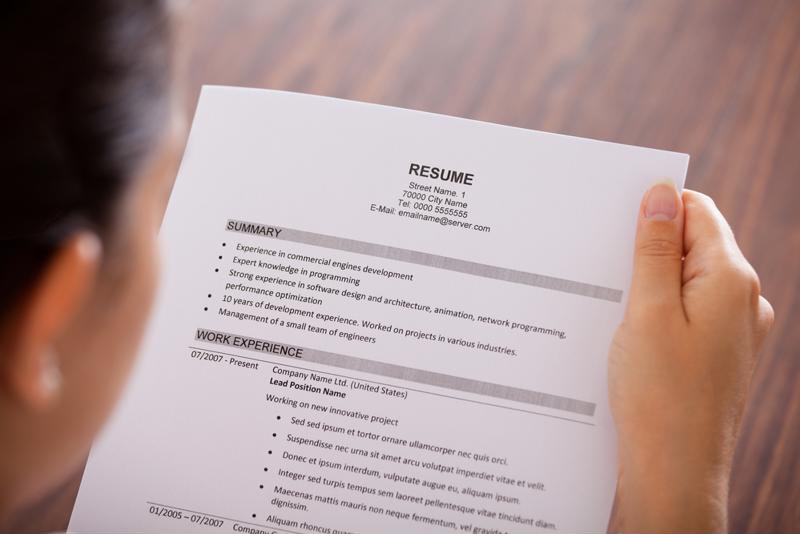
Writing a resume: Quick and easy tips
There is no such thing as a perfect resume. There may not be a set formula that ensures your resume will land in the hands of a hiring manager, but there are a few ways you can tweak your resume to increase your chances of getting an in-person interview with the company of your choosing.
Format, font and finesse all matter when creating your resume. Next time you're applying to a new position, make sure your resume was crafted with the following tips in mind.
1. Nix the fancy fonts
That swirly font and crazy color scheme will set you aside from the majority of job applicants, but not in the way you're hoping. Whether you're applying to be a daycare teacher or a marketing specialist, you need to choose a professional font that can be read easily. Helvetica remains a favorite among executives and businesses, but a classic – like Times New Roman or Arial – is acceptable as well.
"Helvetica is the preferred font of the professional world."
The same can be said about the size of your text. Resumes should be written in 11 to 12 point font, but often, people shrink or enlarge text to accommodate for too much or too little experience. This is not recommended – there are other ways to adapt your resume to highlight your skill set. Text that is notably larger or smaller than that found in other resumes will be flagged by a hiring manager and likely get your resume tossed out.
2. Don't overdo the visuals
Unless you're applying for a position in graphic design, a visual resume is not recommended, neither is attaching pictures or colors. If you're looking for a way to use visuals to your advantage, consider using grey lines to separate sections on your resume. These breaks can provide an easy course for the eye to follow and make your resume more digestible, but be careful – too much of a good thing can end badly and make the document look cluttered.
3. Size matters
How long is your resume? As a general rule of thumb, you want to keep your resume limited to one or two pages. Likely, a hiring manager is going to pay the most attention to any information above the fold on the first page of your resume. This means all relevant information should be at the top of the first page, with supplemental experience and qualifications below. If your resume takes up one full page and less than three-fourths of another, you need to condense. Try to keep it as close to one or two full pages.

4. Leave out irrelevant experience
Overloading your resume will not end well. It's great that you were head cashier at the hot dog cart in high school, but did that position prepare you for a career as a sales representative for a technology company? If the answer is no, leave it out. Select which experience you put in your resume with care, placing the most recent and relevant positions toward the top. Recent college graduates with limited working experience should list relevant collegiate experiences in these spaces, including any leadership roles in university organizations or community service projects they had a hand in managing. Tailor each entry to the job you're applying for, using buzzwords from the job description in each bullet point.
5. Arrange your sections selectively
Your resume may be broken down by education, work, skills, publications and honors, but the order is not necessarily set in stone. Rearrange sections as needed for the position you're applying – for example, if you're applying for an executive assistant job and an online news writing job, you may place work experience toward the top for the first position, while publications would be higher for the latter.
This content brought to you by the Marketing Team at Beacon Hill Staffing Group.
 Back to Top
Back to Top

